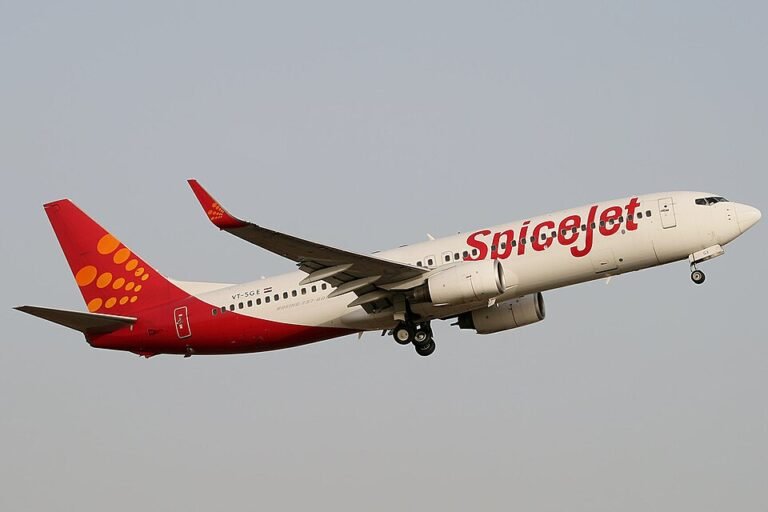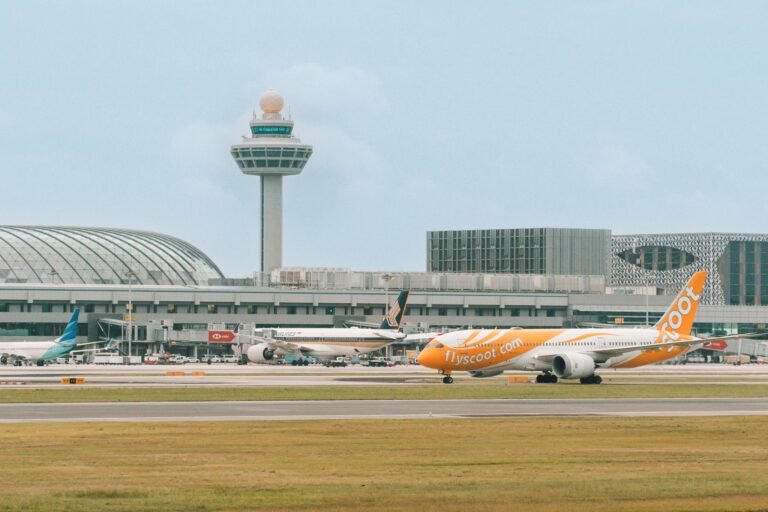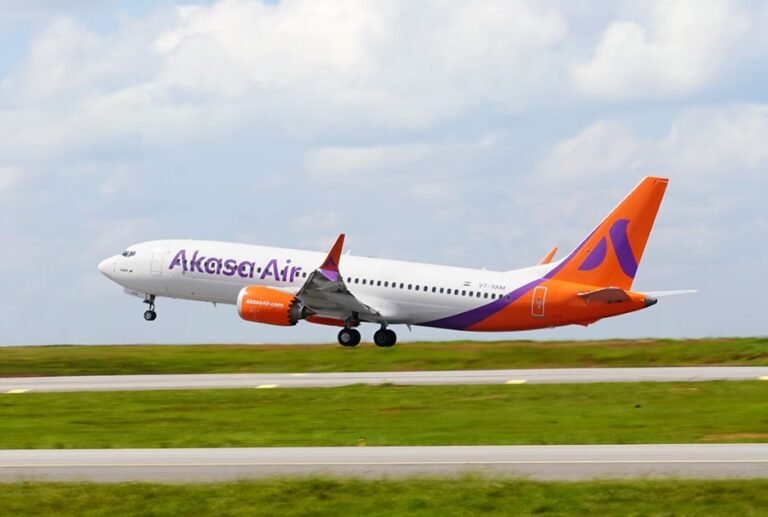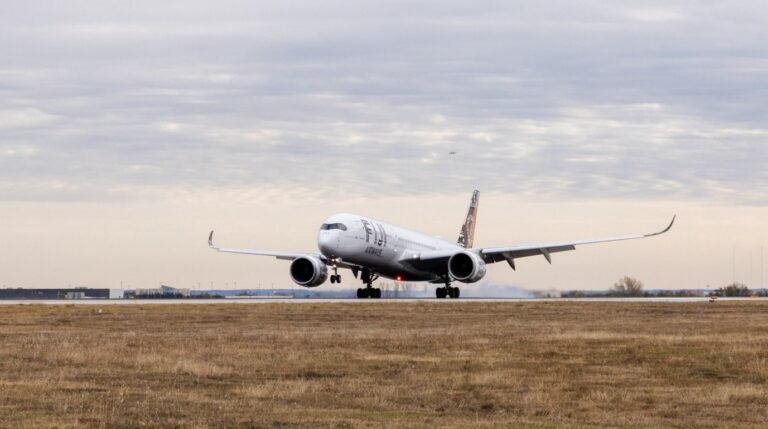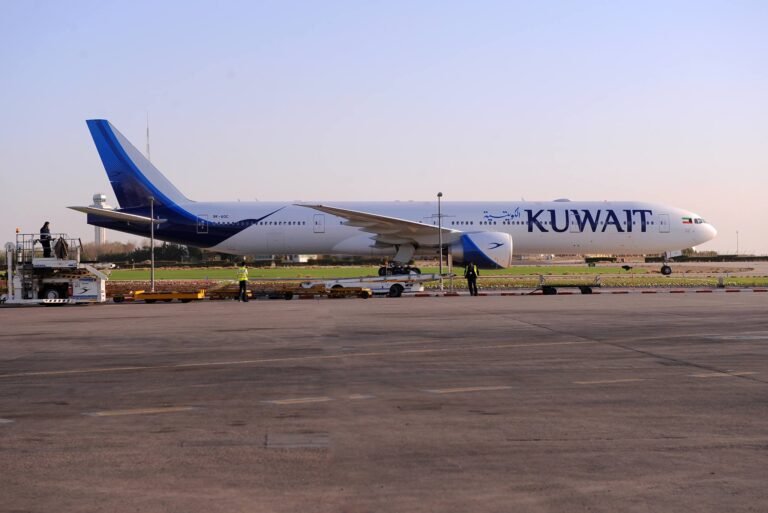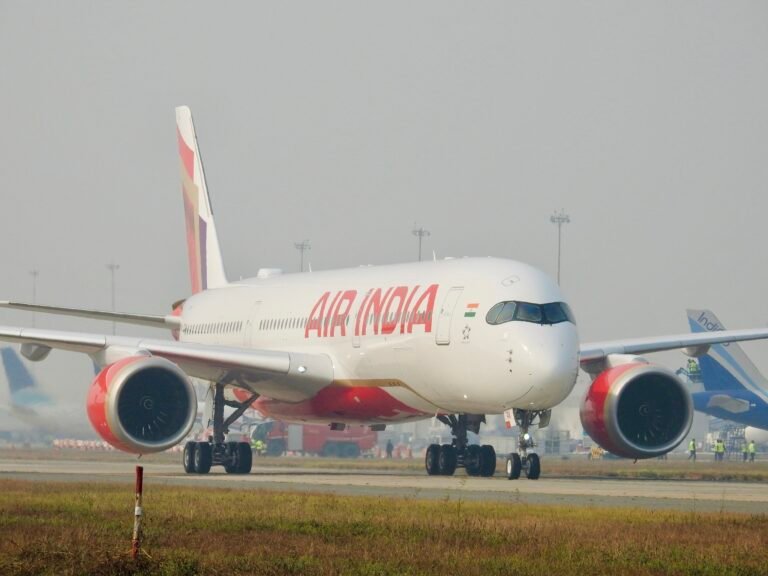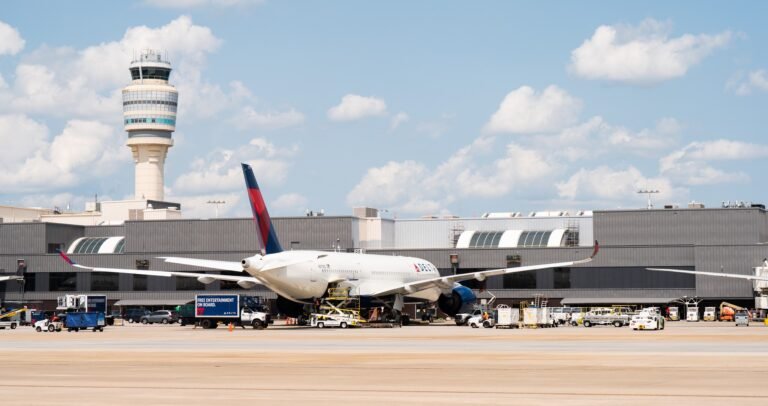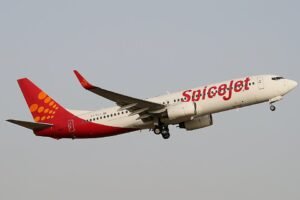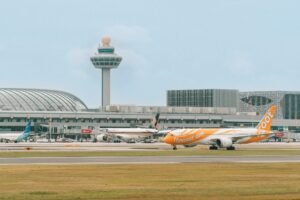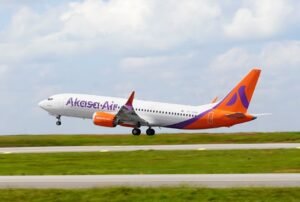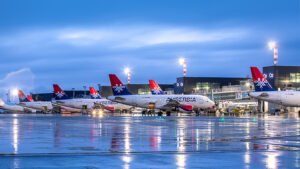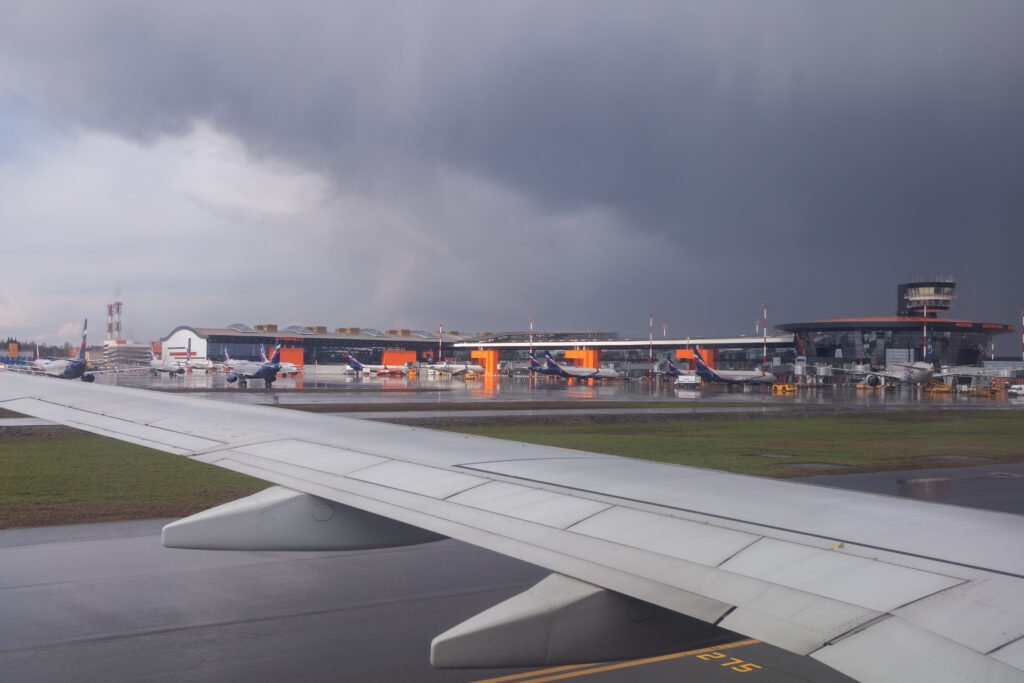
United States: Air travel across the United States experienced major disruption on Monday as severe weather systems swept across multiple states, grounding flights and straining airline operations. According to the latest data from tracking services and airport authorities, over 5,490 flights were delayed and 865 flights canceled as of mid-day, affecting both domestic and international operations.
Airports Most Severely Affected
The weather-related disruption has impacted some of the country’s busiest aviation hubs. Dallas–Fort Worth International Airport (DFW) recorded the highest number of delays and cancellations, with 648 delays and over 315 cancellations reported. In the Midwest, Chicago O’Hare International Airport (ORD) reported over 417 delays and more than 50 cancellations.
The Northeast corridor, a critical region for airline operations, was also significantly affected. Boston Logan International Airport (BOS) saw more than 340 delays, while New York-area airports experienced mounting cancellations and extended ground delays due to active thunderstorms and air traffic management restrictions.
In the South, Hartsfield–Jackson Atlanta International Airport (ATL) logged over 450 delays, making it one of the hardest-hit airports in the Southeast. Additional delays were reported at Philadelphia International Airport (PHL), where airlines struggled with storm-related ground stoppages and equipment slowdowns.
Airlines Respond to Operational Challenges
Major U.S. carriers including Delta Air Lines, American Airlines, United Airlines, JetBlue, and Spirit Airlines have been forced to either cancel or significantly delay flights across their domestic networks. Several airlines activated contingency plans, reassigning crews and equipment to minimize disruption to operations.
Airlines have issued advisories for passengers traveling through impacted airports, urging them to check their flight status before leaving for the airport and allowing additional time for check-in and boarding. Many have also offered travel waivers, allowing rebooking without penalty for flights scheduled between July 14 and July 16.
FAA Implements Weather-Related Traffic Flow Measures
The Federal Aviation Administration (FAA) confirmed that weather-related traffic management initiatives were in place at multiple locations, including Newark Liberty International (EWR), John F. Kennedy International (JFK), and LaGuardia Airport (LGA). These include ground delay programs and flow restrictions to safely manage the volume of aircraft during active thunderstorms and low-visibility conditions.
In addition, ground stops were temporarily imposed in parts of Florida, including Orlando, Fort Lauderdale, and Miami, as the storm system extended into the Southeast.
Summer Travel Season Compounded by Weather
The timing of the disruption comes during one of the busiest travel periods of the year. The summer season has already posed challenges for air traffic control and airport operations, with record passenger volumes, tight crew scheduling, and ongoing staffing pressures.
According to data from the U.S. Department of Transportation, travel volumes in July 2025 are trending above pre-pandemic levels, making the impact of operational disruptions more severe for both airlines and travelers.
Flight Disruption Likely to Continue
Meteorologists have forecast continued storm activity along the East Coast and Midwest through Tuesday, increasing the likelihood of further disruptions. Airlines are urging passengers with flexible travel plans to consider alternative dates.
Airport authorities across affected cities have also issued travel advisories and are working with airlines and ground handling teams to manage crowd control and terminal congestion.
Passengers are advised to stay updated through airline apps, official airport websites, and the FAA’s real-time flight status portal.

